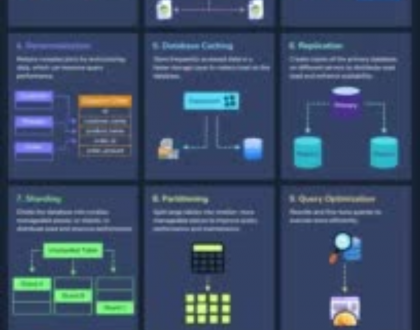Leveraging Analytics and Data Insights for Explosive Growth in Multi-Vendor E-commerce Platforms
Introduction
The digital marketplace is evolving at a rapid pace, and multi-vendor e-commerce platforms stand at the forefront of this transformation. In this article, we’ll explore the strategic role of analytics and data insights in propelling these platforms towards unparalleled growth.
Navigating the Multi-Vendor E-commerce Terrain
The Evolution of E-commerce
Unpack the journey of e-commerce from its humble beginnings to the multi-vendor platforms dominating the online retail landscape today. Discuss the pivotal moments, technological advancements, and consumer behavior shifts that have shaped this evolution.
Unveiling Challenges
Delve into the unique challenges faced by multi-vendor e-commerce platforms. Explore the intricacies of managing diverse product catalogs, addressing vendor competition, and maintaining a seamless user experience. Provide real-world examples of how successful platforms have overcome these challenges.
Decoding the Analytics Advantage
Analytics Unleashed
Demystify the concept of analytics in the e-commerce context. Go beyond mere sales numbers and unravel the power of comprehensive data-driven insights. Explain how analytics can provide a 360-degree view of the business, encompassing customer behavior, market trends, and competitor analysis.
Real-time Analytics: The Need for Speed
Highlight the critical role of real-time analytics in making swift and informed decisions. Showcase tools that provide instant market intelligence, ensuring that businesses can respond promptly to changing trends. Use examples of companies that have benefited from real-time analytics.
Extracting Gold from Data Insights
Understanding Customer Behavior
Embark on a journey into the realm of customer behavior analysis. Showcase how data insights reveal the what, when, and how of customer preferences. Discuss the tools and methodologies employed for effective customer behavior analysis and how businesses can tailor their strategies accordingly.
Mastering Inventory Management
Explore the art of inventory management optimization through data insights. Explain how businesses can analyze historical data to predict future demand, preventing both stockouts and excess inventory. Provide real-world examples of platforms that have achieved optimal inventory management through data-driven strategies.
Personalization Strategies for Stellar Experiences
Crafting Tailored Shopping Journeys
Uncover the impact of personalization on the overall shopping experience. Delve into the mechanics of creating personalized recommendations, showcasing how businesses can leverage data to understand individual preferences. Discuss the role of machine learning algorithms in enhancing the personalization process.
Building Customer Loyalty through Personalized Communication
Examine how personalized communication contributes to customer retention. Provide examples of successful implementation, including personalized emails, targeted promotions, and tailored marketing campaigns. Highlight the long-term benefits of building strong customer relationships through personalized communication.
Success Stories: Realizing the Potential
Dive into case studies of multi-vendor e-commerce platforms that have harnessed analytics and data insights to drive substantial growth and outperform the competition. Provide detailed narratives of each success story, emphasizing the specific analytics strategies employed and the resulting business outcomes.
Tomorrow’s Trends in E-commerce Analytics
The Role of Artificial Intelligence (AI) and Machine Learning (ML)
Predict the future by exploring how AI and ML will shape e-commerce analytics. Discuss the potential of predictive analytics, chatbots, and recommendation engines in revolutionizing the e-commerce landscape. Provide examples of companies at the forefront of integrating AI and ML into their analytics strategies.
Integrating Analytics with Emerging Technologies
Highlight how forward-thinking platforms are merging analytics with emerging technologies such as augmented reality and virtual reality to create immersive shopping experiences. Discuss the impact of these technologies on customer engagement and the potential for transforming the traditional e-commerce model.
Implementing Analytics: A Guide for Entrepreneurs
Equip e-commerce entrepreneurs with practical tips on implementing analytics successfully. Guide them through the selection of suitable tools, interpretation of data, and strategic decision-making. Provide a step-by-step roadmap for integrating analytics into their business operations, considering factors like budget constraints and technical expertise.
Conclusion
In conclusion, the dynamic landscape of multi-vendor e-commerce demands a proactive approach. Leveraging analytics and data insights isn’t just a strategy; it’s a necessity for sustained growth and competitiveness.
FAQs (Frequently Asked Questions)
1. Can smaller e-commerce businesses afford advanced analytics tools?
Absolutely. Many analytics tools offer scalable pricing plans, making them accessible to businesses of all sizes. Consider starting with basic packages and scaling up as your business grows.
2. Is real-time analytics essential for every e-commerce platform?
While beneficial, the necessity of real-time analytics depends on the platform’s scale and transaction volume. High-traffic platforms may find it more critical than smaller ones with lower transaction volumes.
3. How can analytics prevent inventory stockouts?
Analytics analyzes historical data to predict demand, significantly reducing the risk of inventory stockouts. By understanding purchasing patterns, businesses can optimize stock levels.
4. Are there user-friendly analytics tools for entrepreneurs with limited technical expertise?
Yes, several tools cater to entrepreneurs with user-friendly interfaces and minimal technical requirements. Look for platforms that offer intuitive dashboards and provide training or support.
5. How does AI enhance the personalization of the shopping experience?
AI analyzes customer behavior to provide accurate product recommendations, personalized marketing, and an individualized shopping journey. By learning from user interactions, AI enhances the overall shopping experience, fostering customer satisfaction and loyalty.*
Recommended Posts

12 Proven Ways to Improve Database Performance
April 29, 2025



